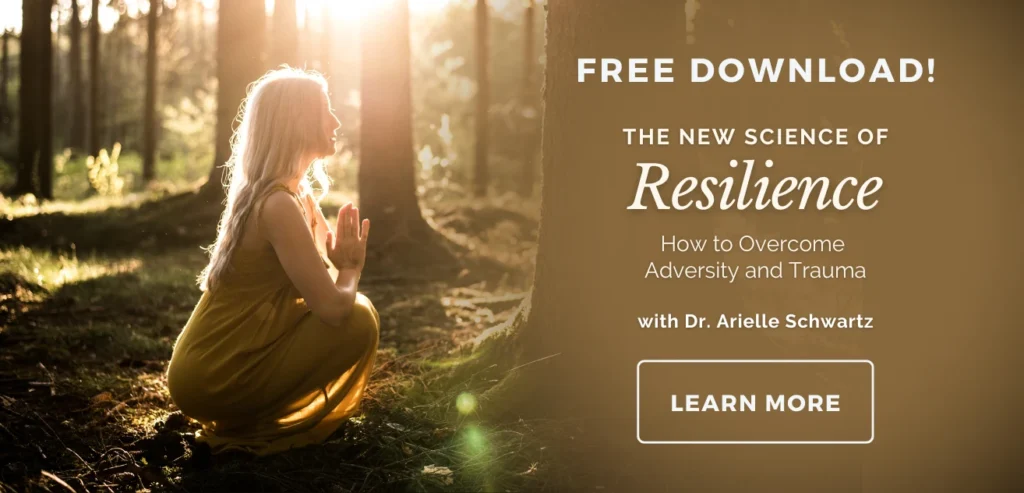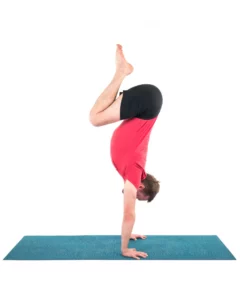Dolphin Pose: Prepare for Peacock Pose (Pincha Mayurasana)

Pincha Mayurasana (Peacock Pose or Elbow Balance Pose) has long inspired anxiety for some of my yoga students. Flipping your legs up with only the support of your forearms on the floor can feel vulnerable. Perhaps because it feels less stable, we don’t practice it as regularly as Headstand Pose (Sirsasana) and Shoulderstand Pose (Sarvangasana).
But unlike Sirsasana, Pincha Mayurasana has no weight on the head and neck. Because of this, it may ultimately be safer for most people. But parallel forearms don’t make as solid a base as the interlaced fingers in Headstand. So in order to feel safe and stable in Peacock Pose, we need to back up and give some energy to strengthening the shoulders and arms before we kick our legs up. Dolphin Pose (Ardha Pincha Mayurasana) is a great way to work toward Peacock Pose (shown below), but it’s also a useful pose in its own right.
Why Practice Ardha Pincha Mayurasana?
Dolphin Pose can be both a preparation for and an alternative to Peacock Pose. Practicing Ardha Pincha Mayurasana regularly for a while—weeks, months, or years—before attempting Peacock Pose can give your upper body the strength to support you in Peacock Pose. It can also get you accustomed to bearing weight in your forearms so that once you feel ready to kick your legs up, it feels familiar rather than foreign. But of course, your yoga practice will not suffer if you decide Peacock Pose is not for you. You can always practice Dolphin Pose instead and still reap similar benefits.
Dolphin Pose Benefits
Dolphin Pose offers many benefits. These include:
- Strengthening shoulders, arms, hamstrings and calves
- Calming and energizing the brain
- Relieving back pain, headache (in some cases) and fatigue
- Therapeutic for sciatica
- Strengthening the core

In addition, Dolphin Pose can be an excellent substitute for Downward Facing Dog Pose (Adho Mukha Svanasana) (shown above) for people with hand and wrist issues. Like Dog Pose, it’s a mild inversion that strengthens and stretches the arms, legs, and shoulders. But the hands and wrists bear no weight. Alternating between Dog Pose and Dolphin Pose during vinyasa practice can be a great way to prevent the hand and wrist stress that sometimes comes with multiple Sun Salutations (Surya Namaskara).

(Shoulder Strengthening Warm-Up Pose)
Dolphin Pose Cautions
While Ardha Pincha Mayurasana is generally safe for most people, there are a few contraindications for practice. These include:
- Acute or chronic shoulder, arm or back injury
- Glaucoma or detached retina
- Unmedicated high blood pressure
- Practicing Dolphin Pose in the first day or two of your period may interrupt your flow and cause cramping.
All but the first contraindications are the same cautions you’d want to practice for any inversion. The Dolphin Pose, like the Dog Pose, is a mild inversion. So proceed with caution or avoid the pose altogether if you’re experiencing any of the above conditions.
How to Practice Dolphin Pose

- Start in Tabletop Pose (Bharmanasana) on a yoga mat.
- Place your forearms on the floor so that your elbows are shoulder-width apart and your forearms are parallel, palms down. Spread your palms and fingers, pointing your middle fingers straight ahead.
- Turn your toes under.
- Press down into the floor with your forearms as you lift your pelvis up toward the ceiling.
- You need not straighten your knees right away. Instead, focus on lengthening your upper arms and torso, creating a long, continuous line from your forearms to your ischial tuberosities (aka “sit bones”). Your ischial tuberosities should be the highest point in your body.
- Straighten your knees if you like, maintaining the length in your torso and arms.
- Avoid the tendency to lift your head. Instead, keep your head and neck in line with the rest of your spine.
- Take 5 to 10 deep breaths here, continuing to press your forearms down as you lengthen your torso and legs.
- Release your knees down to the floor, and then relax in Child’s Pose (Balasana).
How to Support Your Dolphin Pose with Yoga Props

Keeping your elbows right under your shoulders is key to creating a stable base for Ardha Pincha Mayurasana. But there’s a strong tendency for the elbows to slide out in the pose, causing the forearms to angle inward. When this happens, our bony structure, mainly the humerus bones, are no longer able to support us efficiently. Additionally, the shoulder blades can draw inward, compressing the upper back. Using a yoga block and a strap can help prevent this misalignment.
- Start in Tabletop Pose.
- Place a yoga block on the floor between your hands so that it’s widthwise across the mat.
- Make a loop in a yoga strap. Place the strap just above your elbows, and then adjust the loop so that the strap holds your elbows at shoulder-width apart.
- Bend your elbows so that your forearms are on the floor and parallel, palms down. Place the inner sides of the index fingers into the wide sides of the block, with your thumbs pointing toward each other and pressing into the side of the block nearest you. Your index fingers and thumbs will be at a 90-degree angle to each other.
- Now practice steps 3 through 9 in the above instructions.
Also, read...
Teaching Svadhyaya: 3 Ways to Encourage Self-Study in Yoga
In Celebration of Gray-Haired Yoga – Busting the Myth of the Yoga Body
Related courses

Charlotte Bell began practicing yoga in 1982 and began teaching in 1986. She was certified by B.K.S. Iyengar in 1989 following a trip to Pune. In 1986, she began practicing Insight Meditation with her mentors Pujari and Abhilasha Keays. Her asana classes blend mindfulness with physical movement. Charlotte writes a column for Catalyst Magazine and serves as editor for Yoga U Online. She is the author of two books: Mindful Yoga, Mindful Life, and Yoga for Meditators, both published by Rodmell Press. She also edits Hugger Mugger Yoga Products’ blog and is a founding board member for GreenTREE Yoga, a non-profit that brings yoga to underserved populations. A lifelong musician, she plays oboe and English horn in the Salt Lake Symphony and the folk sextet Red Rock Rondo whose 2010 PBS music special won two Emmys.





